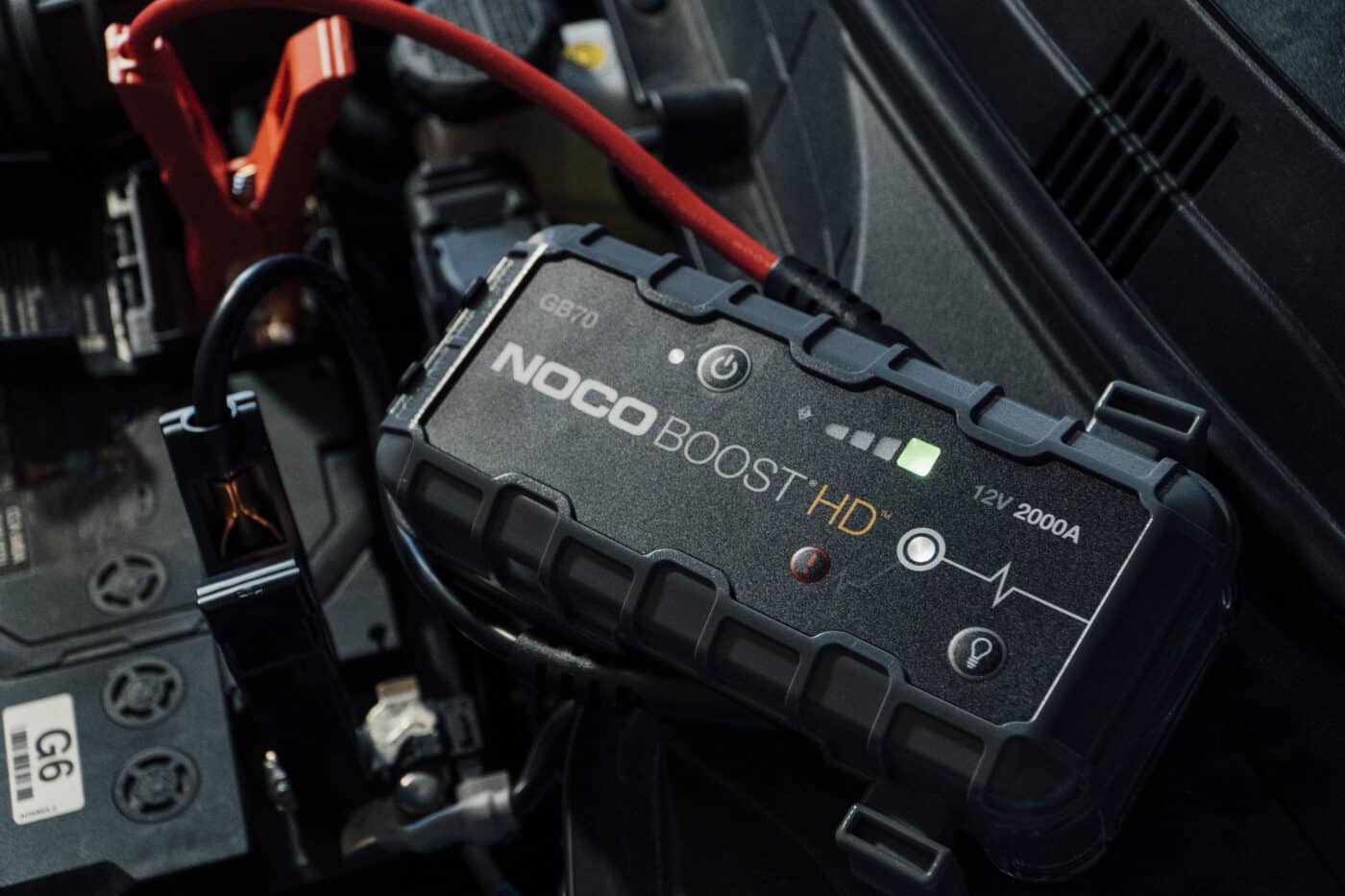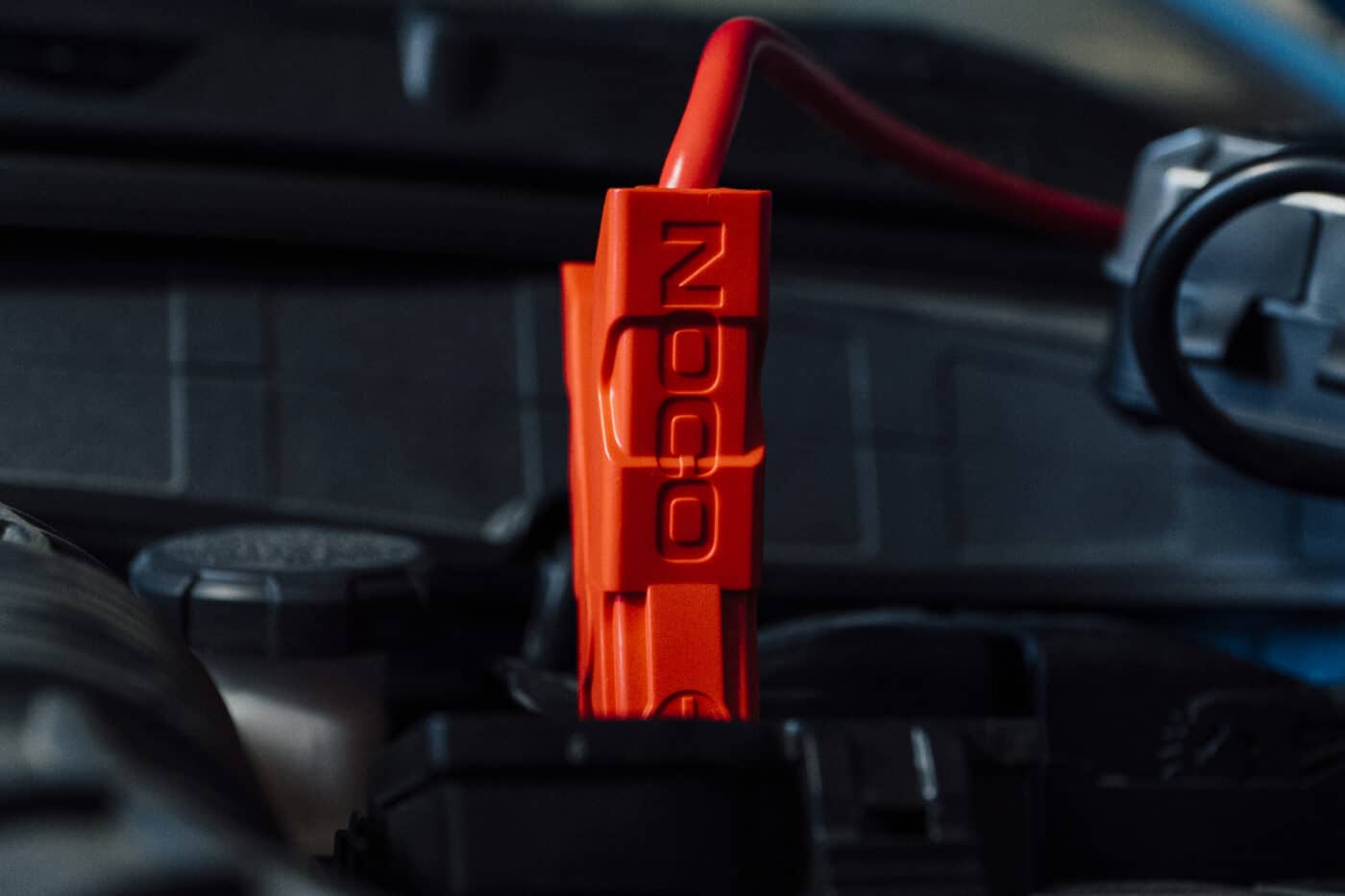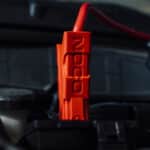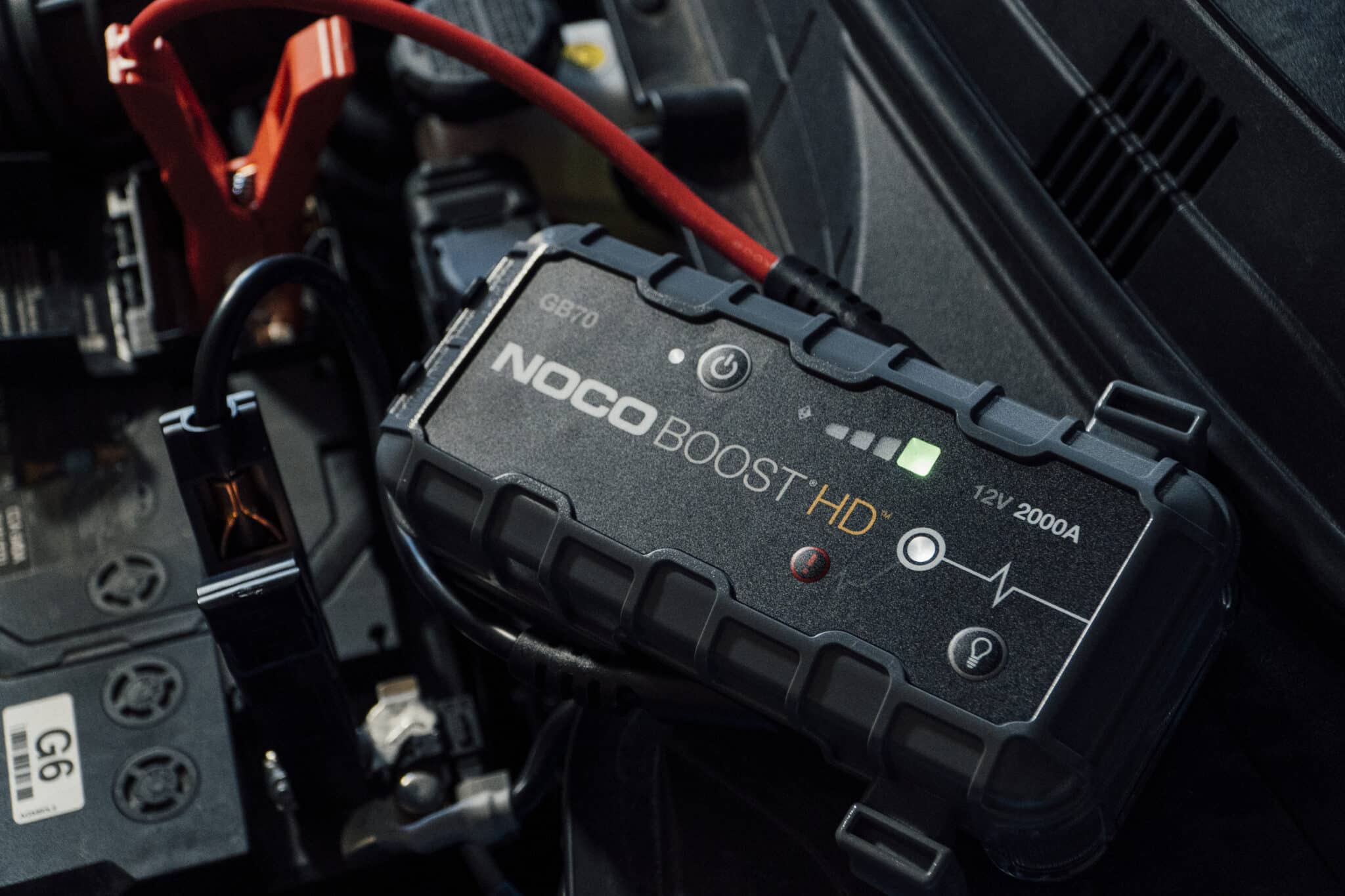Affiliate Disclosure: As an Amazon Associate, Automoblog earns from qualifying purchases. Commissions from Amazon come at no additional cost to you when making a purchase through the links below. The GB70 jump starter pictured here was sent to us by NOCO for this review. See our Privacy Policy to learn more.
NOCO GB70 Crash Course
- Portable jump starters like the NOCO GB70 provide the convenience of on-demand power when your battery inconveniently dies.
- Jumps various lead-acid batteries, including wet cell, gel, maintenance-free, enhanced flooded, and absorbed glass mat (AGM) batteries.
- Handles gasoline engines up to eight liters and diesel powertrains up to six liters in displacement.
- USB and 12V Out ports increase the GB70’s versatility.
Automoblog Review & Evaluation Process
During the winter of 2023, we received the GB70 portable jump starter from NOCO. While using the unit and writing this review, we kept three things in mind, outlined below.
NOCO GB70 Review Summary
Instead of messing with jumper cables or waiting for roadside assistance, you pop the hood, hook the GB70 to your battery, and fire up your vehicle. Portable units, like the NOCO GB70, are also great for winter emergency kits and extended road trips, as they offer additional features beyond the ability to jump a battery.
Officially called the NOCO Boost HD GB70, the 2,000-amp portable jump pack accommodates nearly all lead-acid batteries and almost every gasoline engine and diesel powertrain. The 400-lumen flashlight, integrated charging bank, helpful safety features, and heavy-duty construction make GB70 a good value for the money.
The NOCO GB70 usually lists for about $250, not counting any deals or specials. Below, we will cover the main features of the GB70 if you are in the market for a portable jump starter.
NOCO GB70 In-Depth: What It Offers
The GB70 has affixed clamps and comes with a 40-inch micro USB cable for charging, an XGC extension cord with a 12V male and female adaptor, an owner’s manual, and a microfiber storage bag (it weighs five lbs. with clamps and accessories). The GB70 is only partially charged out of the box, so NOCO recommends fully charging it before use.
Internal Battery & Charging
Using the included micro USB cable and a USB wall charger, it took about three hours to charge fully. According to NOCO, the GB70 can provide up to 40 jump starts on a full charge in ideal conditions.
We have the GB70 in our winter emergency kit and charge it periodically, but we have been pleasantly surprised by just how long the unit holds its internal charge. That said, we have still gotten in the habit of charging it every so often, especially before a longer trip. We want to ensure it’s ready to go if and when needed.
The NOCO GB70 has a 56-watt-hour lithium-ion internal battery with natural convection cooling. Meanwhile, the rubber housing covers for the 12V and USB outlets have an IP65 rating to protect against dust and water. NOCO engineered the GB70 to withstand temps as low as -4°F (-20°C) and as high as 122°F (50°C).
Battery & Vehicle Compatibility
The NOCO GB70 will jump various lead-acid batteries, including wet cell, gel, maintenance-free, enhanced flooded, and absorbed glass mat (AGM) batteries. As a more muscular unit in NOCO’s product line, the GB70 will handle gasoline engines up to eight liters and diesel powertrains up to six liters in displacement, including late-model HD trucks from the Big Three.
Smaller sedans and crossovers should pose little to no sweat for the NOCO GB70 since it’s well-suited for fleet, farm, and other heavy-use vehicles. Likewise, the GB70 can jump garden tractors, snowmobiles, four-wheelers, and other marine and RV batteries.
Precision Clamps & Cables: Advantages & Disadvantages
At the end of the GB70’s hard-wired cables are what NOCO calls “precision clamps.” The overall design has two advantages and two disadvantages, based on our experience.
Advantages: Flexibility & Power Loss Mitigation
An immediate benefit is the spark-proof, crocodile-style design of the clamps, making it so the GB70 can safely and effectively bite down on batteries and terminals of different sizes.
The second advantage is how the attached cables mitigate power loss during a jump, ensuring the GB70 will have enough capacity for larger engines, especially diesel trucks. For example, the smaller NOCO GB40 has detachable jumper cables instead of affixed cables.
While an excellent jump pack in its own right, the GB40 is a 1,000-amp unit versus the 2,000-amp rating of the GB70. While the NOCO GB70 will handle a six-liter diesel, the GB40 caps out at a three-liter diesel mill. The attached jumper cables of the GB70 make a lot of difference in this regard.
The detachable jumper cables of the smaller NOCO GB40 make it easier to stow the unit, but the affixed cables and 2,000-amp rating of the GB70 are preferable if you have a vehicle with a bigger engine.
Disadvantages: Short Jumper Cables & Flashlight Location
One potential downside is the relatively short jumper cables, which is forgivable since the GB70 is a portable unit and can be placed nearly anywhere under the hood to reach the battery.
The second potential drawback is how the cables and precision clamps face away from the flashlight. On the left side is the charging bank, while the flashlight is on the right side. The cables and clamps trail back and away from the flashlight during a jump and go in the direction of the charging bank.
We wish this were reversed, especially for nighttime usage. Ideally, the flashlight and the cables should point in the same direction so it’s easier to see the battery.

Integrated Flashlight
Although not in an ideal location for our preferences, there is no denying the convenience and safety aspects of the 400-lumen flashlight. Hit the lightbulb button to access seven different modes, including an SOS beacon and emergency strobe. The constant-on modes have three different brightness settings, from higher to lower.
Charging Bank
Four ports comprise the left-side charging bank, divided between In and Out with 12V and USB designations. The two In ports charge the GB70’s internal battery. There is one 2.1-amp USB port for up to 10W and a second 12V fast charge port for up to 36W (simply use the included cables and adaptors accordingly).
The USB and 12V Out ports increase the GB70’s versatility. Phones, tablets, and e-watches are changed through the USB Out port, while the 12V port powers other devices like portable tire inflators (we used the GB70 to run our Slime inflator).
Battery Management System
The GB70 is built on a proprietary software platform known as the Battery Management System, or BMS. As described by NOCO, the BMS is responsible for key safety features and creating a “mistake-proof” product for customers.
With the BMS, the GB70 only outputs when it recognizes its cables are correctly attached to a battery. For example, if you accidentally connect to the wrong terminal (reverse polarity), the GB70 will not activate. If the polarity is correct, but one of the clamps is loose, the BMS prevents the GB70 from delivering power.
With a proper connection, the white 12V LED light will illuminate on top of the unit. The GB70 will make an audible click, indicating that jumping the battery is safe (you can hear how that audible click sounds in our YouTube video of the GB70).
Rather than hitting everything it connects to at full blast, the NOCO GB70 only delivers the juice required by the battery needing a jump. Essentially, it can tell the difference between a lawnmower battery and a truck battery and adjust its power delivery accordingly.
Is The NOCO GB70 Worth The Money?
Putting aside our desire to change the location of the flashlight, the 2,000-amp NOCO GB70 is designed to be the only portable jump starter you would ever need. Since it’s built for juicing up bigger engines, the GB70 should have no problem tackling the average sedan or crossover.
Growing up in rural Iowa, the GB70 seems like something to have on a shelf in the Morton Building for a cold, rainy day. Here in Michigan, it makes for a nice addition to our office garage and winter emergency kit.
Carl Anthony is the Managing Editor of Automoblog and the host of AutoVision News Radio and AutoSens Insights. As a respected automotive industry thought leader, Carl has appeared on numerous podcasts and radio shows, including Wrench Nation, Cars Yeah, The Car Doctor, and Brains Byte Back, in addition to appearing as a regular contributor on MotorMouth Radio on WHPC 90.3 FM. His work can also be seen and heard 24/7 on the Automoblog YouTube channel.
Photos: Alex Hartman.





























